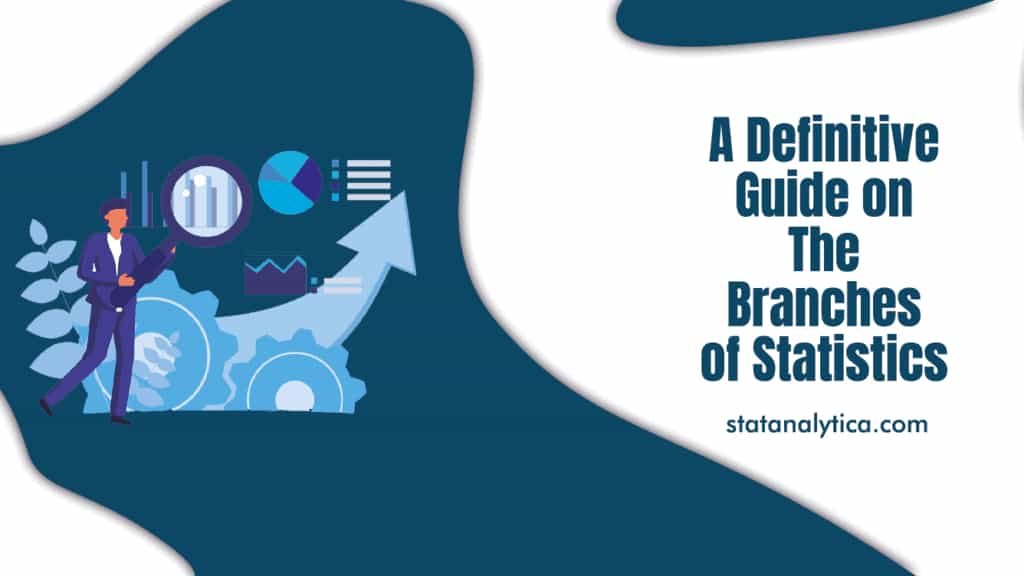To learn statistics from a holistic point of view, students should have the knowledge of two branches of statistics. It is essential to learn and understand the whole idea of statistical analysis. The two branches of statistics are descriptive and inferential statistics.
These branches of statistics follow a particular scientific approach that makes them equally important to every statistical student. Today, in this blog, we will discuss the branches of statistics. Before we get started, let’s have a quick look at what statistics is?
What is Statistics?
Table of Contents
Statistics is the main branch of mathematics. Used to perform different operations, i.e., Data collection, organization, analysis, and so on. In other words, statistics is a form of mathematical analysis that uses quantitative models to give a set of experimental data or studies of real life. Statistics examine the methodology for collecting, reviewing, analyzing, and making data conclusions. Some statistical measures include the following:
- Mean: It is an important concept in mathematics and statistics. The mean is an average and the most common value in the collection of numbers.
- Regression analysis: It is a powerful statistical method. It allows us to examine the relationship between two or more variables of interest.
- Skewness: In statistics, skewness is a degree of asymmetry that is observed in a probability distribution. Distributions can display right (positive) skewness or left (negative) skewness to differing degrees. A normal distribution (bell curve) presents zero skewness.
- Kurtosis: It is a measure of the combined weight of a distribution’s tails relative to the center of the distribution.
- Variance: It estimates the variability from the mean or average.
- Analysis of variance: The method of statistics that separates the variance data into several components used for additional tests.
Now, let’s move towards discussing the two branches of statistics, Descriptive and Inferential Statistics.
Branches Of Statistics
Descriptive Statistics
Descriptive statistics is the first part of statistics that deals with the collection of data. People think it is too easy, but it is not that easy. The statisticians need to be aware of the design and experiments. They also need to select the correct focus group and keep away from biases. On the contrary, Descriptive statistics are used to do various kinds of analysis on different studies.
| Example of Descriptive StatisticsThe average score of the college students in the math test.The average age of the people who voted for the winning candidate in the last election.The average length of the statistics book. |
Descriptive statistics have two parts;
- Central tendency measures
- Variability measures
To help understand the analyzed data, the tendency measures and variability measures use tables, general discussions, and charts.
Measures of Central Tendency
Central tendency measures specifically help statisticians evaluate the distribution center of values. These tendency measures are:
Mean
Mean is a conventional method used to describe the central tendency. Typically, calculate the average of values, count all values, and then divide them with the number of available values.
Formula of Mean
m= Sum of the terms/numbers of terms
| For Example: Calculate the mean of the following data:10, 10, 40, 50, 20 Solution: m= Sum of the terms/numbers of terms10+10+40+50+20/5130/5 = 26Thus, mean=26 |
Median
It is the result that is in the middle of a set of values. An easy way to calculate the median is to edit the results in numerical journals and locate the result that is in the center of the distributed sample.
Formula of Median
To solve the median, there are two formulas;
- When n is odd,
(n+1 / 2)th observation
- When n is even,
median=(n/2)th + (n/2+ 1)th observation / 2
| For Example 1: Find the median of 4, 1, and 7. Solution: As the given are odd numbers of observations, then we apply the formula,median= (n+1)/2Thus, the median is3 + 1 / 2 = 4 / 2 = 2Median = 2 |
| For Example 2: Find the median of the data 2, 4, 6, 8, 10, 12. Solution: As the given numbers are even of observation, then we use the formula (n is even), We will pick the middle numbers, 6 and 8.Thus, the median will be6+8/214/2 median= 7 |
Mode
The mode is the frequently occurring value in the given data set.
| For Example: Find the mode of the given data,4, 2, 4, 3, 2, 2 Solution: Arrange the numbers2, 2, 2, 3, 4, 4Now you can see that the number 2 is found 3 times. Thus, the mode of the given data is 2. |
Measures of Variability
The variability measure helps statisticians to analyze the distribution that is spreading from a specific data set. Some of the variables of variability include quartiles, ranges, variances, and standard deviation.
Also Read
- Important Key Points On “SAS Vs Stata” by Statistics Experts
- What Are The Different Types Of Charts In Statistics And Their Uses?
- Top 10 Most Important Application of Statistics in Daily Life
Inferential Statistics
Inference statistics are techniques that enable statisticians to use the information collected from the sample to conclude, bring decisions, or predict a defined population.
Inference statistics often speak in terms of probability by using descriptive statistics. Besides, a statistician uses these techniques for data analysis, drafting, and making conclusions from limited information. That is obtained by taking samples and testing how reliable they are.
Most future predictions and generalizations on a smaller specimen population study are in the inference statistics’ scope. Besides, most social sciences experiments deal with studying a small sample population that helps determine the community’s behavior.
Designing a real experiment, the researcher can bring conclusions relevant to his study. When making conclusions, it should be cautious not to draw wrongly or biased.
| Example of Inferential Statistics Suppose you want to get an idea about the percentage of the people who love shopping at FILA. We take the sample of the population and find the proportion of individuals who love the FILA brand. With the assistance of probability, this sample proportion allows us to make a few assumptions about the population proportion. This study belongs to inferential statistics. |
Different types of inferential statistics include:
- Regression analysis: It is a set of statistical methods used to estimate relationships between a dependent variable and one or more independent variables. It includes several variations, like linear, multiple linear, and nonlinear. The most well-known models are simple linear and multiple linear.
- Analysis of variance (ANOVA): ANOVA is a statistical method that distributes observed variance data into various components. A one-way ANOVA is applied for three or more data groups to gain information about the relationship between the dependent and independent variables.
- Analysis of covariance (ANCOVA): It is used to test categorical variables’ main and interaction effects on constant dependent variables and keep control for the impact of selected other constant variables. The control variables are known as covariates.
- Statistical significance (t-test): It is used to determine a significant difference between the means of two groups related to particular features. A t-test studies the t-statistic, the t-distribution values, and the degree of freedom to learn the statistical significance.
- Correlation analysis: It is a statistical method that is used to find the relationship between two variables or datasets and discover how strong the relationship may be.
Conclusion
Now you may have a better idea about the branches of statistics. Remember that we are not digging too much into the topic. Besides, this is just a beginner guide on the branches of statistics if you are a statistics student. And if you need statistics homework help, then we are here to help you.
Our statistics experts are always there to provide you with the best statistics homework help services as per your requirements and pocket-friendly charges. So what are you waiting for? Submit your work now to get instant help.
Frequently Asked Questions
What are the branches of demography in statistics?
Demography refers to the study of population, and it focuses on five aspects, which are as follows;
Size
Geographical Distribution
Composition
The components of change (birth, deaths, or migration)
The determinants and consequences of population change.
What is the difference between the two branches of statistics?
Statistics is divided into two major parts: descriptive and inferential statistics. Descriptive statistics represent what is going on in a population or data set. On the contrary, inferential statistics enables the statisticians to take findings from a sample group and generalize them to a larger population.


